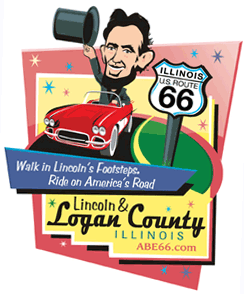|
 Strategic plans are most often talked about, sometimes actually
written and often neglected after completion. Strategic plans are most often talked about, sometimes actually
written and often neglected after completion.
Although Dalpoas tempered it with humor, he did warn that a
strategic plan would do no good whatsoever if, once written, it is
delegated to a shelf to gather dust.
"Strategic planning comes down to four basic questions," Dalpoas
said. "It comes down to: Where are you now? Where do you want to go;
where are you going to be in five years? How are you going to get
there? How will you know when you get there?"

Strategic planning is a tool that any group of people can use to
proactively plan their future. It is a systematic process of
envisioning a desired future and translating this vision into
broadly defined goals or objectives and a sequence of steps to
achieve them.
Dalpoas said there are also a few things that a strategic plan is
not. It is not a one-shot deal; once the initial plan is developed,
it will continually evolve. It is not a box of tricks or a quick fix
to all our problems. And, it is not something to do and leave
sitting on a shelf.
A good plan, used properly, will offer innovative ways to achieve
its goals, will decrease time invested in crisis management, will
give continuity in changing times and changing leadership, will use
resources effectively, will anticipate issues, and will create a
commitment to common goals.
Dalpoas said that designing this plan is not going to be easy; it
is hard work.
In addition he said that there are some factors that will cause
it to fail: a lack of leadership, a lack of commitment and an
attitude that "nothing helps, and nothing ever changes."
He asked the group: Do we want to do this?
David Schonauer spoke up, saying; "I think everyone, all
government, is pretty well in the same boat. We don't have the money
and resources to carry out a process. I think there are probably a
lot of things we'd like to see done, but the money and resources
just aren't there to do it."

Earlier in his comments Dalpoas had referred to the "players" as
the ones who would be responsible for building the strategic plan.
Andi Hake of the chamber asked who those players might be, and
Patrick Doolin of Integrity Data offered his opinions on the
subject.
"Excluding current administration, of course, there has been a
lack of ability to strategically think in this municipal
leadership," he said.
Doolin continued: "The question I asked Jack Schultz years ago
when he was here was, 'Whose responsibility is that? Is it the
municipal leadership or is it the people: the residents and
businessmen?'"
He said that Schultz answered, "The responsibility lies in the
community with the support of the municipal leadership."
Doolin said: "So therefore when we talk about the players, I
think there has been this mindset of 'We'll sit back and wait for
the city to tell us where we're going and what we're doing.' There
are problems with that: One, we haven't had that happen, but also
the city is constrained, being a municipal organization, in how they
can go about initiating change."
He concluded, "Therefore, I feel the players really are this
room."
Dalpoas asked if there were any huge obstacles facing the group
that would make them say, "No, it's too big, too hopeless."
Chris Ilam of Main Street Lincoln said that perhaps there would
be a poor relationship among the players. "I think at our last
summit we recognized that we had lots of players in different
organizations that may be doing some of the same things, but they
are not connected," he said. "The relationships are broken."
Crystal Alley, representing herself, added that this is seen a
lot in the school system. "Everybody will come to the table to talk
about it and say they want to be part of the solution, fix it and
make it better," she said.

"But really the people who show up first are the ones defending
their territory," she continued. "They are trying to protect what
they have because they are resistant to change. Then you have a few
that will try to carry on and pose a solution to the problem, but it
will come with great resistance."
Dalpoas said that another part of starting a strategic plan is
gaining commitment and involving all those affected by the plan.
He noted three beginning key factors: Gain commitment through
involving others in the plan; outline the process of who's going to
do what, how it fits in with the overall architecture; and spend
time with all levels of the group.
He concluded: "This is hard work, it isn't easy. This is very
hard work to move an organization forward, but you've got to spend
time laying a foundation of commitment; otherwise, it will unravel
in the end."
"Strategic planning is worthless unless you have a strategic
vision." Dalpoas read aloud this quote from John Nesbitt, who he
said is an accomplished strategist.
"Visioning: What do we want to become?" He commented further:
"Visioning allows the planning team to decide how they want the
organization to be perceived in the future. The team will explore
what they want to look like in five years."
He concluded: "So a vision statement is an action statement that
outlines the future."
He offered a slide in his PowerPoint presentation showing the
vision statements of two towns that have posted theirs on the
Internet.
[to top of second column]

 |
 One of those was the following from Sunset, Utah:
Sunset City will be a community where every person and
every family is important and respected. We will give the
community a stable, safe, healthy, caring and friendly
neighborhood. We will protect our natural environment and
promote cultural, social, economic and recreational
opportunities that encourage present and future generations
to choose Sunset as their home. The City will give
particular emphasis to protecting and enhancing
beautification of the City, promoting the local economy,
supporting the range of educational opportunities, promoting
housing property values, maintaining an effective
infrastructure, enhancing leisure activities and encouraging
voluntary and community activities. We believe that our
commitment is the foundation of all our endeavors to make
our community a better place now and for future generations.

He said that the vision statement was action-oriented and a
framework for the city's strategic plan.
"So, what is the vision for Lincoln?" Dalpoas said. "I did my
eighth-grade Google search, and I didn't find a vision statement for
Lincoln, Ill."
Using strategic planning, before the community can move forward,
they need to know what they are working toward, and that is done
through the vision statement.
Gary Davis spoke up, drawing from the earlier discussion of the
book "Caught in the Middle," and said that the group could start
building their vision statement by going back to their "good news"
list and prioritizing and magnifying those things, then adding to it
from there.
Hake expanded on that by saying that in addition, as the vision
statement is written, the group should also look at the "bad news"
from the earlier discussion and focus on how to turn that around.
Once a clear vision is established, then the team can start
looking at goals. Their first question then will be: Does this fit
into our vision of the future?
Dalpoas said that a good vision will assist those who look at an
idea and personally oppose it, but they can still see that the idea
does fit into the vision of the future, so, for the greater good,
they will support it.
Dalpoas said that the group would have to do an assessment of
their current situation: What percentage of Logan County's business
buildings are vacant? Has the value of homes dropped in the
community? Are there fewer people employed? -- just to name a few.

He said that such data should be tracked, and as the strategic
plan is put into place and used, these statistics could be measuring
sticks for how we are progressing.
Doolin commented that as we measure, we should measure everything
possible, and Keith Ray said that there are generally accepted
benchmarks for small communities that the group can work with.
Crystal Alley warned that if the group isn't careful, they can
come down with "analysis paralysis." She explained that in
collecting a list of measures, the group will need to be certain
that what they are measuring is directly related to the final goals
of the vision statement.
As an example only, she said that measuring empty buildings in
the community might not be of value if growth is not a priority.
Dalpoas said that after the group confirms they want a strategic
plan and have their vision in place, they need to figure out how to
get to their vision. This is done through setting goals.
In setting goals, he used the acronym SMART, saying you want to
set goals that are specific, measurable, attainable,
realistic and timely.
He then said that the next step is to plan innovative approaches
to accomplishing your strategy; check that the plan is consistent
with the vision; and divide the proposed activities into manageable
tasks, determining what will be done and who will do it.
Dalpoas used the Lincoln Developmental Center as a hypothetical
example of how following all these steps would achieve a goal
consistent with the vision.
To start with, know where you want to end up. The goal here would
be to redevelop LDC. The tactic to achieve the goal would be to have
it listed with a commercial real estate agent by the end of 2013.
The leader in the effort would be the mayor. And finally, the
measure would be a signed lease agreement, showing that the goal has
been reached.
"Once a strategic plan is developed, it is now up to the
membership to follow through," Dalpoas said. "Set priorities and
establish time frames for short- and long-term goals, establish an
implementation committee, and delegate tasks."

Dalpoas ended his presentation with a quote from Joel Barker:
"Vision without action is a dream. Action without vision is simply
passing the time. Action with vision is making a positive
difference."
Another relevant Baker quote is, "No one will
thank you for taking care of the present if you have neglected the
future."
The group that makes up the Economic Summit -- Mayor Keith
Snyder, county board chair Terry Carlton, their board members and
councilmen, Main Street Lincoln, the Lincoln & Logan County
Development Partnership, the chamber of commerce, tourism bureau,
local businessmen, and citizens of Lincoln and Logan County -- is
determined not to neglect the future of Lincoln and Logan County.
In the final segment of this series on the Economic Summit --
Round Two, the mayor addresses the group, offering some good news
going on in the community, as well as his plans for future summits
and some calls to action for the group.
[By NILA SMITH]
Previous articles in
series:
Mayor hosts economic summit, round 2
|